IT???S early morning and the sun is rising behind the North York Moors. I???m standing on a frosty platform at Northallerton station, waiting for a train to York. Fields are deep in water from the recent floods, but the sky is clear and cold, the sun is a ball of fire, and all the indications point towards a memorable January day ??? perfect for stepping back in time and following in the footsteps of the Vikings . . .
Half an hour later I???m in the Bike Shed cafe, in Micklegate, just inside York???s mediaeval walls. Time for a coffee before striding out. The plan is to walk down the River Ouse to Fulford, cut across the countryside on a footpath called the Minster Way, join the River Derwent at Kexby, and wander upstream to Stamford Bridge.
York and Stamford Bridge played pivotal roles in the events of 1066. The Battle of Stamford Bridge ??? fought between the invading forces of Harald Hardrada, king of Norway, and the Anglo-Saxons under Harold Godwinson, king of England ??? was so bloody and decisive it is credited with bringing the Viking era to an end. Viking raids from Denmark and Norway did continue for several years, but on a far smaller scale. The wind had been knocked from their sails.
So, coffee finished, I???m off to wander through history and visit the places where these events were enacted ??? put my feet in the boots of the Vikings, if you like. It beats sitting at home talking to the chickens. And despite the pavements being icy, York looks like a fine city to walk through. (Click pictures for high-res images)

 First, a bit of background. York was established in the 1st Century by the Romans, who called it Eboracum. But its real rise to prominence came centuries later in 866 when Ivar the Boneless and his rampaging Danish army (the ???Great Heathen Army???, according to the Anglo-Saxon Chronicles) took over the city and it became known as Jorvik. And as Jorvik it was the focal point of the Danelaw, that vast swathe of northern England that remained under Viking influence until well into the 10th Century.
First, a bit of background. York was established in the 1st Century by the Romans, who called it Eboracum. But its real rise to prominence came centuries later in 866 when Ivar the Boneless and his rampaging Danish army (the ???Great Heathen Army???, according to the Anglo-Saxon Chronicles) took over the city and it became known as Jorvik. And as Jorvik it was the focal point of the Danelaw, that vast swathe of northern England that remained under Viking influence until well into the 10th Century.
By 1066, ex-Viking York was a peaceful Anglo-Saxon city, though with a rich Scandinavian heritage. The fine city walls and castle we see today had yet to be built, but it was a powerful centre of commerce and trade. Anyway, it???s time to make a move.



 I slide down Micklegate to the River Ouse and cross a bridge to the eastern quays. Two blokes in fluorescent jackets are cleaning the riverside road with a high-powered hose, blasting away slippery silt deposited by the floods. The Ouse bursts its banks here on a regular basis. A drop of rain in the Pennines and pictures of a flooded York city centre appear in almost every newspaper. Well, they appear in The Northern Echo anyway.
I slide down Micklegate to the River Ouse and cross a bridge to the eastern quays. Two blokes in fluorescent jackets are cleaning the riverside road with a high-powered hose, blasting away slippery silt deposited by the floods. The Ouse bursts its banks here on a regular basis. A drop of rain in the Pennines and pictures of a flooded York city centre appear in almost every newspaper. Well, they appear in The Northern Echo anyway.
I try to imagine times when longships glided up the river with their stripy sails billowing and oars slicing the water. But it???s not easy with cyclists swerving around you and dog-walkers striding past without so much as a friendly nod. Funny thing that. No one seems prepared to say hello or good-morning in York. Perhaps I shouldn???t have worn the hat with the horns. And I knew the bearskin shirt was a mistake before I set out.
Here???s a bit more background to set the scene. Everyone???s heard of 1066 and all that. Everyone knows a hugely important battle took place that changed European history for ever and landed us with a foreign aristocracy. But not everyone appreciates that if this first northern battle on the outskirts of York hadn???t occurred less than three weeks earlier, then Hastings might well have ended in an Anglo-Saxon victory.

 So 1066. This is history unfolding. English king Edward the Confessor dies on January 5. Being celibate, he has no natural heir so there is an unseemly scramble to seize the throne. The nearest to it, geographically though not necessarily legitimately, is Harold Godwinson, earl of Wessex. A little more distant, though with perhaps more credentials, is William of Normandy ??? or William the Bastard, as the Anglo-Saxon Chronicles refer to him.
So 1066. This is history unfolding. English king Edward the Confessor dies on January 5. Being celibate, he has no natural heir so there is an unseemly scramble to seize the throne. The nearest to it, geographically though not necessarily legitimately, is Harold Godwinson, earl of Wessex. A little more distant, though with perhaps more credentials, is William of Normandy ??? or William the Bastard, as the Anglo-Saxon Chronicles refer to him.
Harold seizes the throne, because he can. William gets angry, because that???s in his nature ??? and he reckons Edward the Confessor chose him as his legitimate heir. Harold is crowned and consolidates his kingdom. William builds a fleet to invade England. But there are two wild crows tossed into this gathering storm.
The first is Harold???s brother, Tostig, who was until recently the earl of Northumbria. But he threw a wobbler and rampaged around the countryside with a private army, only to be driven into Scotland. Tostig rather fancies the throne for himself. After Harold is crowned, Tostig harries the coast of Kent with a fleet of warships. But he???s no match for Harold and he flees back to Scotland.
The second crow ??? perhaps more of a raven ??? is darker and more malevolent. Standing 7ft tall, Harald Hardrada, king of Norway and seasoned warrior whose campaigns have ranged from Denmark to Constantinople, believes he has an indisputable right to the throne through his blood links to the households of Denmark and Anglo-Saxon England.
He too assembles a fleet ??? numbering at least 300 longships carrying about 15,000 Vikings. And he sets sail before William of Normandy can run a flag up his mast because he has the advantage of the weather. Off they go. Norwegian arms are driving this iron-studded dragon down the storm-tossed river like an eagle with wings flapping.
It???s the back-end of summer, 1066, when Harald Hardrada sails into the River Tyne where he teams up with Tostig and his men and ships. Together they sail down the coast, ransack Scarborough ??? which is no bad thing, if you ask me ??? enter the Humber estuary and row up the Ouse towards York. They moor their longships at Riccall, a few miles to the south of the city, get tooled up and march towards the walls. And this is where events become frenzied.
 And me, I???m slipping and sliding along the riverbank towards Fulford, which was a village in its own right in 1066 but is now a suburb of York. Where the paths aren???t covered in silt they are slippery with frost. Otherwise, it???s a perfect morning for a walk. I???m seeing parts of the North I didn???t know existed, corners and crannies of an ancient city. There are no steep climbs or windy summits here, but there is certainly a deep sense of history. And that???s pulling me forwards.
And me, I???m slipping and sliding along the riverbank towards Fulford, which was a village in its own right in 1066 but is now a suburb of York. Where the paths aren???t covered in silt they are slippery with frost. Otherwise, it???s a perfect morning for a walk. I???m seeing parts of the North I didn???t know existed, corners and crannies of an ancient city. There are no steep climbs or windy summits here, but there is certainly a deep sense of history. And that???s pulling me forwards.
Soon I???ll be leaving the banks of the Ouse – which is the colour of milky coffee and is bearing no small amount of flood debris towards the Humber estuary – and heading through Fulford to join the Minster Way.
Now I didn???t know this before I set out, but the Minster Way is a long-distance footpath that links the minsters of Beverley and York. It merges with the Yorkshire Wolds Way in places, which I walked about 12 years ago, and joins a tin-full of other routes I???ve never heard of such as the Chalkland Way, East Riding Heritage Way, Jorvik Way, Trans Pennine Trail and Wilberforce Way. So there???s plenty of walking around here. Hope it gets a bit drier underfoot, though.
On the outskirts of Fulford I leave the River Ouse and plough through boglands towards the village. Fulford is a pleasant settlement of red-brick houses and tidy gardens these days. But on September 20, 1066, it was not the most pleasant place to be. Believe me. Back to where we left off . . .
 The northern English get wind of the invasion. The earls Edwin of Mercia and Morcar of Northumbria assemble an army of 5,000 men in York and march towards Riccall to challenge the Vikings. The two armies meet at Fulford and fight a bloody battle. Heavily outnumbering the locals, the Vikings are victorious. But they suffer about 900 casualties, compared with the 750 lost by the Anglo-Saxons.
The northern English get wind of the invasion. The earls Edwin of Mercia and Morcar of Northumbria assemble an army of 5,000 men in York and march towards Riccall to challenge the Vikings. The two armies meet at Fulford and fight a bloody battle. Heavily outnumbering the locals, the Vikings are victorious. But they suffer about 900 casualties, compared with the 750 lost by the Anglo-Saxons.
The Vikings enter York and celebrate their achievement. Now they can consolidate their power across the North by gathering hostages from prominent families before turning their attention to the Saxon king Harold away to the south. But he can wait, for now.
And that was the Battle of Fulford, a bloody conflict with a name that has survived nearly a thousand years. I walk past a rather large cemetery, the occupants of which date from a much later period, rejoin the Minster Way and cross a footbridge over the A64 ring-road. Beyond the ring-road, with its noisy and intrusive traffic, I am at last in peaceful countryside.
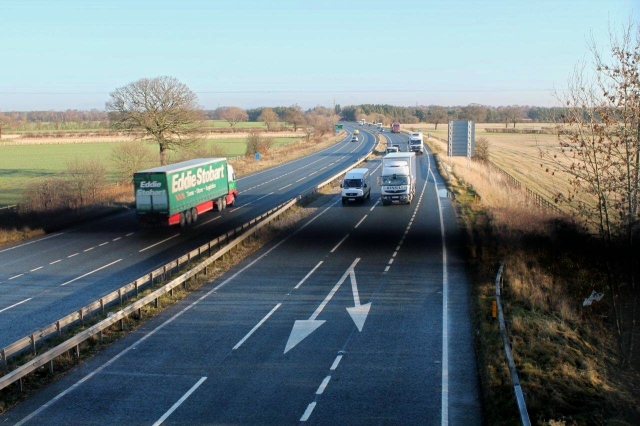 It???s wet underfoot, mind. There are still a few flooded fields and the ditches and becks are the same milky-coffee colour as the River Ouse, but the sun is shining and the sky is a crystal clear blue. The Minster Way is easy to follow, and I???ve two sausage rolls and a ham and cheese sandwich ??? purchased on York station (doing my bit for the local economy) ??? in the rucksack. What could go wrong?
It???s wet underfoot, mind. There are still a few flooded fields and the ditches and becks are the same milky-coffee colour as the River Ouse, but the sun is shining and the sky is a crystal clear blue. The Minster Way is easy to follow, and I???ve two sausage rolls and a ham and cheese sandwich ??? purchased on York station (doing my bit for the local economy) ??? in the rucksack. What could go wrong?
Nothing much, except I???ve underestimated my route by about four miles and I???ve not brought a drink. Oh, and I fall flat on my back on a particularly muddy section of path and stagger back to my feet with my backside and hands caked in the stuff. Other than that, my worries are insignificant compared with what is about to befall certain historical figures. But that???s what happens when you underestimate a challenge.

 Because down in London, awaiting tidings of William???s fleet approaching from Normandy, Harold hears about the fall of York and takes an instant decision. He gathers his warrior band about him, raises his army, and embarks upon one of the most epic, heroic, and super-human journeys in military history.
Because down in London, awaiting tidings of William???s fleet approaching from Normandy, Harold hears about the fall of York and takes an instant decision. He gathers his warrior band about him, raises his army, and embarks upon one of the most epic, heroic, and super-human journeys in military history.
Travelling day and night, his army of about 12,000 men takes four days to cover the 185 miles (298km) to the outskirts of York. And that???s without freeze-dried food and lightweight gear. No evenings relaxing with a pint of Sam Smith???s bitter in a wayside pub and certainly no bar meals. Fancy a go?
Harold arrives in Tadcaster, just south of York, on the night of September 24. The Vikings have absolutely no idea he is anywhere in the vicinity. So far as they are concerned, he???s still in London waiting for the Normans to cross the Channel. Big mistake that. But not quite the biggest.
The following morning the weather is extremely hot and sunny for late September. The Vikings march to Stamford Bridge, where they have arranged to gather hostages from local gentry. They leave a third of their force to guard the longships at Riccall. And because it???s a hot day, they also leave their heavy armour behind, carrying only their weapons and shields.
Meanwhile, Harold???s army reaches York with the crowing of the cocks. He has gathered more men on the route north and his army now numbers in the region of 15,000. His warriors are heavily armed, ready to fight, and many are on horseback. The Anglo-Saxons surge down the Roman road to Stamford Bridge ??? now the A166. Absolute hell is about to break loose.
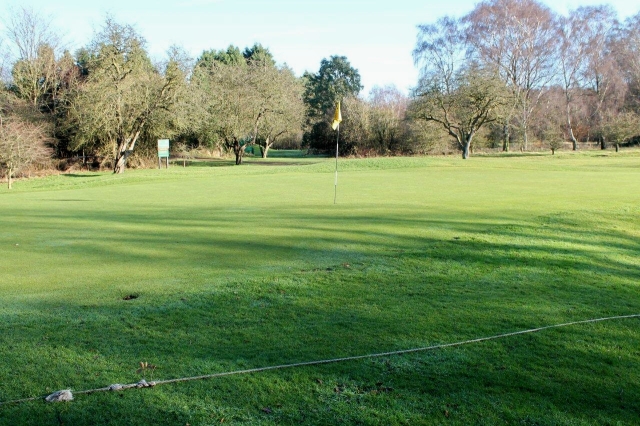
Other bits are flat and the grass has been mown to stop your boots slipping. And someone has stuck yellow flags in the ground so you don’t lose the route. They’re considerate folk in Yorkshire . . .
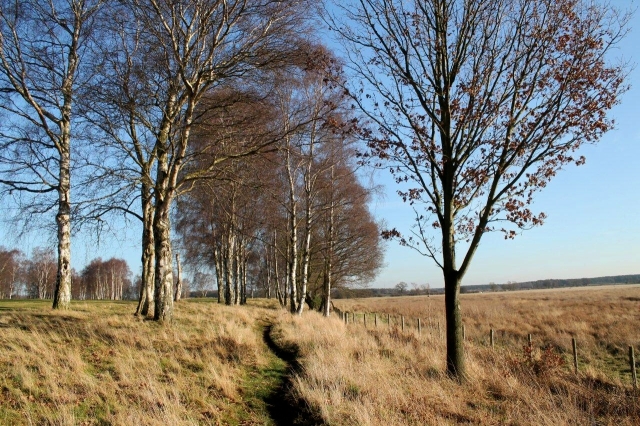



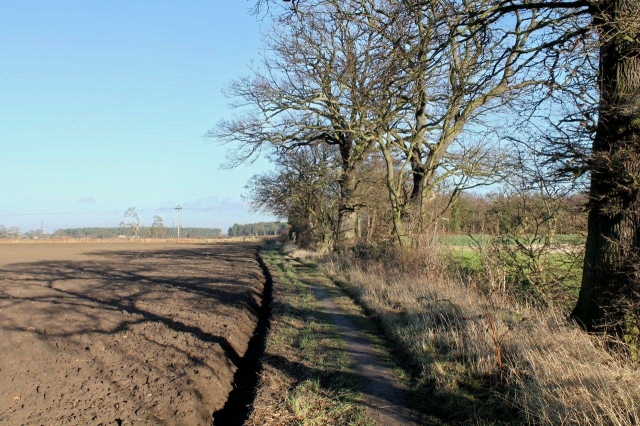
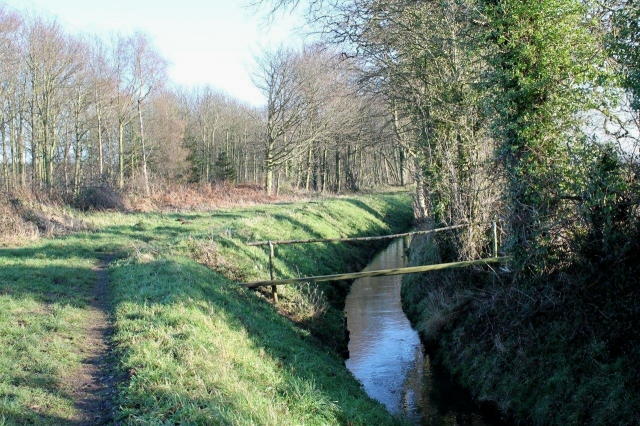


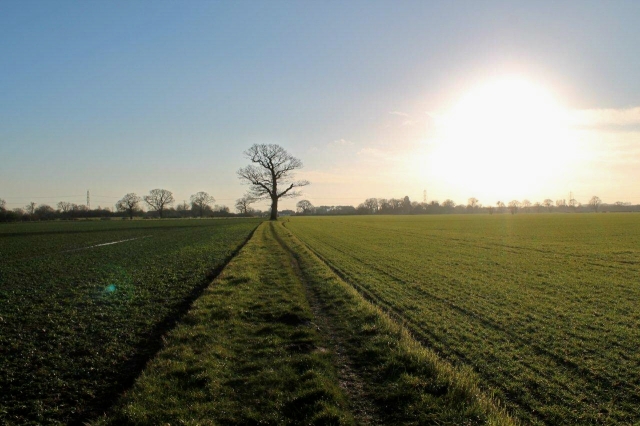 Funny stuff is history. You can read one account of a battle, and then another account, and both can differ considerably. Even the unfortunate participants, every single one would have a different experience, different recollections, different interpretations of what actually happened in the chaos and bloodshed. This is what I???m thinking as I reach Kexby and the River Derwent. I???m also thinking that I???ve miscalculated distances because the sun???s starting to go down and I???ve a few miles left to walk.
Funny stuff is history. You can read one account of a battle, and then another account, and both can differ considerably. Even the unfortunate participants, every single one would have a different experience, different recollections, different interpretations of what actually happened in the chaos and bloodshed. This is what I???m thinking as I reach Kexby and the River Derwent. I???m also thinking that I???ve miscalculated distances because the sun???s starting to go down and I???ve a few miles left to walk.
From Kexby I follow the River Derwent north towards Stamford Bridge. The walking???s good here. Actually, it???s been good all day except for the occasional mud bath. In dry weather it would be a delight. But hey, we???re in England and it???s January. What the heck. Respect mud.

This is the third of these signs I’ve passed. I think they refer to the Yorkshire penchant for exaggeration rather than the uncastrated adult male bovine
SO, the Battle of Stamford Bridge. There are so many different opinions as to what actually happened, that I???m just going to relate the bare bones. The Anglo-Saxons ride out of the west and fall on the Vikings, who are taken completely by surprise.
One of the niceties that has filtered down over the centuries is that Harold attempts peace negotiations with his brother, Tostig, before the battle commences, offering him reconciliation if he switches sides. Tostig asks what his friend, Harald Hardrada, can expect for his troubles. Harold???s riposte is pure Hollywood bravado, exactly the sort of thing John Wayne would have said: ???Six feet of ground or as much as he needs, as he is taller than other men.???
The battle commences and the Vikings are beaten back across the narrow wooden bridge that spans the Derwent. According to some accounts, and certainly popular legend, the bridge is held by a single Norwegian beserkr with a big axe, who gives the Vikings breathing space to regroup on the eastern bank.
This is where the word berserk originates ??? as in going berserk. A berserkr was a Norse warrior who, to put it mildly, went completely off his head in battle. The word means bear-shirt, because the original berserkir wore shirts made from bearskin and they chewed the rims of their shields ??? I expect rather aggressively ??? before going into battle. That would worry me if I was on the opposing side.
So this giant of a berserkr is going berserk on the bridge, chopping the arms, legs and heads off anyone who tries to get past him. He is unassailable. Until an Anglo-Saxon spearman paddles a little boat under the bridge, and thrusts his spear up between the planks to skewer the berserkr from below.
There are many painful and undignified ways for a man to die, but that must surely be one of the worst. And there???s me worrying about mud on my backside.

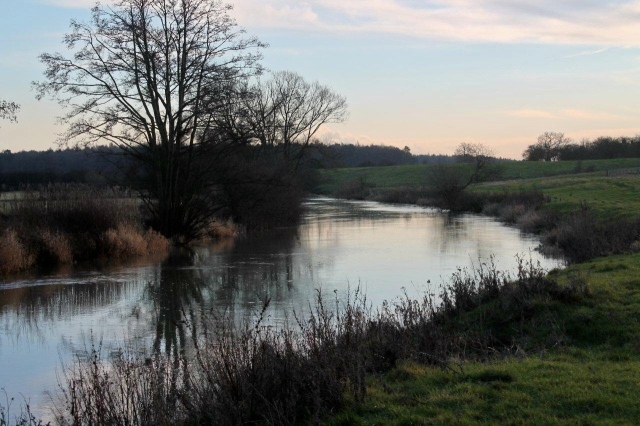 I???m getting within arrowshot of Stamford Bridge. I can see the graceful stone arch in the distance on a bend in the river beyond an old railway viaduct. The sun has gone down and the moon is rising. The moon is actually hovering over the bridge itself.
I???m getting within arrowshot of Stamford Bridge. I can see the graceful stone arch in the distance on a bend in the river beyond an old railway viaduct. The sun has gone down and the moon is rising. The moon is actually hovering over the bridge itself.
Now if I???d been tramping up here on the day of the battle, I would at this point have been overtaken by several thousand frenzied Vikings rushing to the aid of their comrades. Back to 1066 . . .

This is the graceful though redundant railway viaduct. Stamford Bridge’s stone bridge can be seen in the far distance
The Vikings left behind on the Ouse at Riccall to guard the ships ??? about a third of the invading force ??? get news of their countrymen???s plight. They clad themselves in heavy mail shirts, pick up their weapons . . . and run. Several thousand heavily-armed men run the best part of 13 miles (20km) on one of the hottest days of the year. They arrive at the battlefield exhausted (in fact, I read somewhere that several died of exhaustion) and lay into the Anglo-Saxons.
And although the reinforcements very nearly turn the tide of battle, their efforts are in vain. Harald Hardrada is dead ??? shot through the throat with an arrow. Dangerous things those arrows. Tostig is dead. An estimated 6,000 invaders lie slaughtered on the field. The Anglo-Saxon losses are estimated to be 5,000. So many corpses are piled on the field that Battle Flat, as it becomes known, is still white with bleached bones fifty years later.
 I leave the mud of the riverside path and clamber onto the bridge. This isn???t the bridge on which the berserkr died, of course, it???s a stone replacement ??? but still very narrow and probably quite ancient in itself. Today the traffic is controlled by lights, and pedestrians have their own metal walkway off to the side.
I leave the mud of the riverside path and clamber onto the bridge. This isn???t the bridge on which the berserkr died, of course, it???s a stone replacement ??? but still very narrow and probably quite ancient in itself. Today the traffic is controlled by lights, and pedestrians have their own metal walkway off to the side.
I had intended to walk through the town to Battle Flat, where there stands a memorial to the fallen. But the gloom is gathering and conditions are too poor for photography. I???ve also got a train to catch back in Jorvik. So I take a couple of shots of an aesthetically pleasing longship the locals have constructed at the side of the bridge, buy a bottle of pop and wait for a bus.
 Here???s something to think about. I???ve walked about 13 or 14 miles today. It???s the first walk I???ve done for a while and I???m feeling pretty stiff. Those Vikings ran the same distance in hot weather wearing heavy armour and then fought a battle. And Harold and his men ??? four days from London to York with hardly any sleep and then fighting a battle at the end of it. Puts things into perspective.
Here???s something to think about. I???ve walked about 13 or 14 miles today. It???s the first walk I???ve done for a while and I???m feeling pretty stiff. Those Vikings ran the same distance in hot weather wearing heavy armour and then fought a battle. And Harold and his men ??? four days from London to York with hardly any sleep and then fighting a battle at the end of it. Puts things into perspective.
And think about this as well. I???m going home to a hot bath and a roast dinner. Poor old Harold, he???s just heard that William???s landed at Hastings. He???s got to do the whole thing again, only in reverse.
It???s 1066 and all that. I???ll raise a glass to Harold tonight. God speed old mate. And keep an eye open for those arrows.
- The largest Viking longship ever discovered, the 121ft Roskilde ship, unearthed in Denmark in 1997, is going on exhibition in London
- Og endelig,??tak Hanna for at give mig ideen til at skrive denne artikel



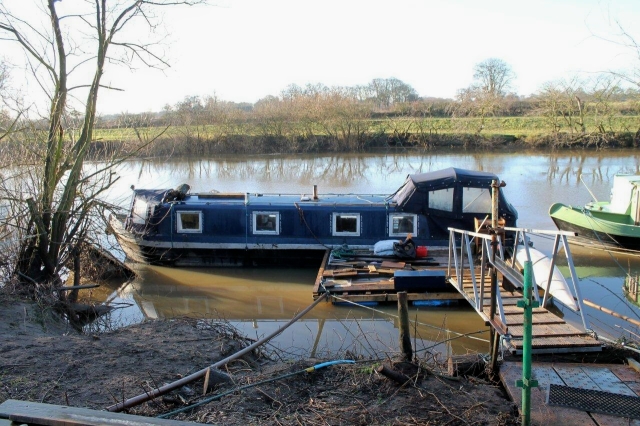
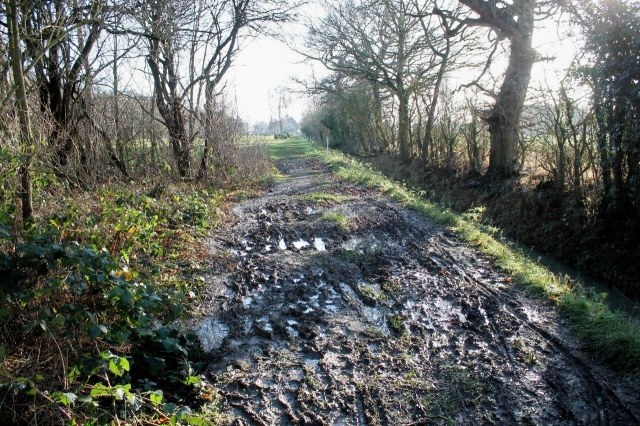


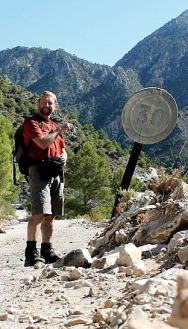



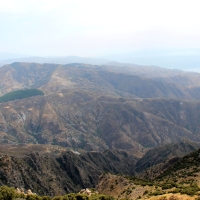



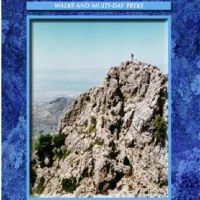

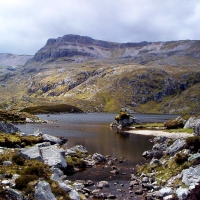
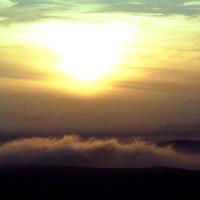



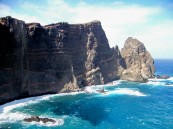

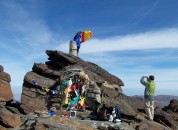




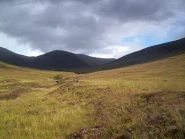





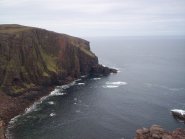
cracking report Alen, I am attempting something on a far less grand scale down here in South Wales and certainly much more murky in terms of historical accuracy.
Really enjoyed this!
LikeLike
Hi Saddlebags. Thanks for that. I’ve just signed up so I’ll keep and eye open.
Cheers, Alen
LikeLike
no worries Alen, I am fighting against a severe lack of (written) knowledge as its a very obscure 6th/7th century battle in South Wales. Anyway, site visits and OS maps are helping ????
LikeLike
You should put these walks into a book. The way you bring the history into everything always prevents the article from being a dry bones navigation exercise. Sitting here with a blocked earhole it was good to ‘get outside’ in and around York. (I wish York wasn’t in Yorkshire, it’s a long haul getting over there and I like York.)
The tale of Harold and Stamford Bridge was one of the memorable episodes in Simon Schama’s tv series. The battle and the circumstances boggle the mind and if one element had gone the opposite way we might all be living in a Scandinavian-style social democratic haven of sensible politics instead of the brainless blood and spew of Anglo-Saxon neo-liberalism. (Must get this ear unblocked!)
You should do guided walks. Film them. Send them to the BBC. Who knows, you might end up replacing John Craven on Countryfile.
LikeLike
Chris, you’re always good for a laugh. But first things first. I’ve had a blocked earhole since I flew to Spain in November. Been to the doc’s twice and there’s still no resolution. Something to do with a vacuum in the inner ear and a blocked Eustachian tube, which sounds to me like a faulty metro system beneath an eastern European city.
I caught the Simon Schama series. And there was also an excellent TV drama based on the events of 1066 about three or four years ago. I keep meaning to see if I can get hold of a DVD.
Not so sure about the guided walks. With my route finding even the most patient Scandinavian-style social democrats might get a bit flustered.
All the best, Alen
LikeLike
Fascinating stuff. I’m ashamed to say I was a student in York and didn’t know any of this history. It wouldn’t be so bad if but I studied history. Anyway, you’ve inspired me to tackle this walk next time I’m north…hopefully the ground will be a bit drier by then.
LikeLike
Hi Lapoubelle. It is actually a very pleasant walk and quite easy to follow on the OS map. In drier weather it would be much easier because I think most of my energy was expended trying to stay upright.
I’ve just been reading your John Paul Jones article. Excellent stuff. I worked for a time in Whitehaven and know the area well. I think I’m overdue a visit.
Cheers, Alen
LikeLike
Hi Alen. Lovely place Whitehaven. I did a very blustery walk along the cliffs from St. Bees. Gorgeous. I’ve never really explored the coast in that area, but planning a return trip already. All the best, Paul
LikeLike
Another cracking piece of writing, Alen. I agree with Chris that this deserves a much wider audience. Had I not been retired from teaching, I would have used this almost in its entirety to stimulate the interest of a lower school history class (though whether Michael Gove would approve is another matter).
LikeLike
Hi Will. Thanks very much for that. If Michael Gove would have agreed I would have been extremely disturbed. He’s not on my Christmas card list.
Cheers, Alen
LikeLike
I enjoyed this, thanks! I??ve always thought that Ivar the Boneless must have been one hell of a dancer when he??d had a few.
LikeLike
Ha ha. I bet he was a right good laugh. That’s set me up for the rest of the day.
Cheers, Alen
LikeLike
Yet another cracking read, I really do enjoy the mixture of history, politics and the other gems of info you weave into your walk posts.
LikeLike
Hi David. Ta for that. I really enjoy writing this sort of stuff ??? I just wish I could make it pay. But there you go. If we were all happy and contented all of the time, would life be worth living?
Don’t answer that.
Cheers, Alen
LikeLike
Always interesting and informative, your posts. Trouble is, I think of comments I want to make as I read and forget most of them by the end!
Anyway – hope they let you back on the train with your muddy arse! And I never knew we’d had a celibate king! That provokes the same comment my Agriculture teacher said to me when he was teaching me livestock management and found I was vegetarian – “Well, that’s a bankrupt philosophy for a start!”
Carol.
LikeLike
Hi Carol. Not only did I get back on the train with my “muddy arse”, but I slipped all the way down the stairs to Platform 8 on York station and ended up in a heap at the bottom. There was an extra layer of grubbiness on me by the time I boarded the train.
So I take it that if you’re a vegetarian, you won’t want a slice of my Fray Bentos Steak and Kidney Pie if you ever smell the delicious aroma drifting across a campsite?
LikeLike
Do you know, I wish they’d do a Quorn or other vegetarian version of those Fray Bentos pies – I used to love them and the puddings – just the pasty was so lush! My Dad put one in the oven once without piercing the lid and blew the over door off and bent all the shelves! ????
LikeLike
I hope it didn’t spoil the pie.
LikeLike
What an adventure you have experienced, Alen. A trip through battlefields, mud, sunlit fields and a journey through time. I am proud to have inspired you for this article, but will also apologise on behalf of Denmark for bad behaviour at the time when the Great Heathen Army swept through England.
It’s incredibly interesting looking back in history. I hope you got toasted for Harald. He deserves a lot of sympathy because of his brother, Tostig.
Now you have inspired me with your post, Alen.
But until then take a look at Sea Stallion from Glendalough. You can see how the ship behaves in the North Sea.
Best wishes to you and your back ????
All the best,
Hanna
http://webtv.vikingeskibsmuseet.dk/?poditemid=2214&tagsid=121&soegeord=
LikeLike
Hanna, if you apologise for Ivar the Boneless and the Great Heathen Army it means that I’ll have to apologise for Nelson’s attack on Copenhagen. Perhaps we should leave it at that.
I’ve thought of doing a few more Viking walks, but I’ll have to leave my favourite until the warmer weather because a great deal of water is involved and a long drive. But I’m interested to see what you’ve come up with so I’ll look forward to seeing that.
I took a look at the Sea Stallion video. I like the bits where they’re all sitting round a nice cosy fire, but those high seas and rough waves breaking over the deck are a bit too much for me. I’ll stick to dry land, I think.
All the best, Alen
LikeLike
Maybe you forgot, but you have actually apologized for Lord Nelson, so I just thought I’d be polite ????
I was in Roskilde and see Sea Stallion being built. Later I spoke with the museum’s photographer, Werner Karrasch after they had sailed to Dublin and back home. He has taken some crazy beautiful and dramatic pictures of the trip. As he said, it was not much sleep he got, the people came to him every time there arose a special situation.
I hardly got any sleep as they rounded the Land’s End. There were regular reports on how the ship and the crew did. There were big problems. People was extremely seasick and shivering. The waves came in sideways on the ship and caused it to roll violently. But the crew were impressed with the movements in the rough seas. They told how the Sea Stallion meanders like a snake, while the woodwork squeaks and creaks. I love that ship ????
LikeLike
That bloody Lord Nelson has come back to haunt me. I had a hunch I???d mentioned him before but I wasn???t sure in what context. I was hoping you wouldn???t remember.
Your final sentence struck a chord with me, Hanna. For several years I worked in a shipyard building vessels for the Royal Navy. I hated the work and I was glad to get out. But I had a respect and admiration for the ships I was helping to build, though I couldn???t, at the time, put those feelings into words.
Then one day about six years ago I was returning from Spain into Portsmouth on a ferry, and there tied up at a quayside was an aircraft carrier I???d helped to build during the late 1970s. It had been decommissioned from the navy and was waiting to be scrapped. I just filled up. I couldn???t speak because I was so choked up with emotion and there were tears welling in my eyes. I can???t explain why I felt like that, I just did. That ship was part of my life ??? and it was waiting to be towed away to India to be cut up into pieces.
So I can appreciate your love the Sea Stallion. It is a fine vessel. May it sail the whale road for ever.
Alen
LikeLike
Brilliant! Absolutely wonderful reading! Well I would say that, as Harold Godwinson is one of my all time hero’s. As an old ex-toxopholite the story of 1066 is one of my favourite pieces of history. I’ve even visited Battle near Hastings but really should also have gone north to follow this earlier story first. The great thing about your article here was that you were making me laugh, which at this moment is a painful experience as I’ve hurt my back & even a cough jars all my vertebrae! Worse still were the hilarious comments that follow the article! I had to go & lie down on the floor before the muscle spasm started up again! Alen, thank you. I really must get out more!
LikeLike
Hiya Ash. My apologies for making you laugh. Having had broken ribs on several occasions I know how painful laughing ??? and sneezing ??? can be. I’ve learnt something today, though. I’ve never come across the word toxopholite before, but now I know what it is I’ll use it as and when the opportunity arises.
I visited Battle with my family many years ago and we took a tour of the site. But I’ve seen news articles recently stating that the historical site might actually be somewhere else. A bit like Bosworth Field. But there you go.
Hope your back gets better soon. Cheers, Alen
LikeLike
I too visited Battle Abbey with my family when the children were very young. In fact I had to drag them along as they thought they were going to the seaside, which they did, eventually. They couldn’t understand why I wanted to stand in the middle of a field & study the lie of the land. The shoreline at Hastings they insisted was a much better destination for our day out! As I understand it even then the exact site of the Battle of Hastings was never pinpointed accurately but that field & surrounding area below the old abbey was a reasonable spot for a battle. Of course modern day technology & a couple of Blackadder historians now say that the battle site lies under a roundabout on the A21(?). That may be the case, but I for one could not imagine asking my family to stand in the middle of the road just so that this old sod could try to envisage one of the greatest turning points in British history. PS. I’ve just been out for my first proper walk in three weeks, down to Asda to search for one of those Fray Bentos pies! How frustrating! Couldn’t find any.
LikeLike
Ash, thanks for brightening up a dull morning. I shall forever be lumbered with a mental image of King Harold standing in the middle of a roundabout with his arrow in his eye. And yes, I know that according to contemporary accounts he was cut down by Norman warriors emerging on horseback from a sliproad, but the legend is more powerful than what is now accepted as historical fact.
I had the same trouble with my child when he was young. Whenever we went out in the car he would mutter from the back seat: “Oh, no, we’re not going to see another pile of stones, are we?” Now we’re taking his daughter around piles of stones. It’s great and she loves it.
Keep searching for the pie. It’s worth it.
All the best, Alen
LikeLike
I enjoyed your muddy post ???? The Vikings were astonishing. And great names: Eric Bloodaxe, Ragnar Hairybreeks, Harald Bluetooth, as well as Ivar the Boneless. I hope their ghosts didn’t mind – we gave the names to our family teddy bears.
LikeLike
I hope your teddy bears don’t get up to half as much mischief, Mrs P. Ragnar Hairybreeks ??? I’d forgotten about him. Great name, but I bet he wasn’t the sort of chap you’d invite round for dinner.
Cheers, Alen
LikeLike
Brilliant article, Allen, I really enjoyed it! ???? I knew a bit about the Vikings, Harold and Stamford Bridge, but not some of the details. Yes, the feat of marching all that way, with little food or rest, defeating the bloodthirsty Vikings, then turning around to tramp down to Sussex… it’s unimaginable. No wonder it all went badly wrong at the very worst moment. I have read about berserkers as well – I think one was depicted in the Lewis chessmen – but I didn’t know that was how they came by their name. And how scary!? Who needs Game of Thrones?! Great photos, too – thank you for squelching through knee-deep mud in order to bring us this story! ????
LikeLike
Hiya Jo. Thanks for that. The Lewis chessmen, yes, I’d forgotten about them. There is a berserker and he’s chewing his shield. I’ve just been looking at him on Google images. What a bloke. I’d love a full chess set because they’ve all got the same startled expression. I’ll try to do a picture link but these things are not always successful.

Cheers, Alen
LikeLike
Thank you, yes, the link worked! What a crazy guy! I hadn’t realised that the rest of them look just as manic! One of my dreams is to unearth something like this on a deserted beach. How amazing would that be?! ????
LikeLike
I can’t think of a more pleasant way to spend to spend the rest of my life.
LikeLike
I have just read this report of the battle – really superb. I know Stamford Bridge area reasonably well and I knew about the battle but you bring it all into perspective with your excellent writing and photographs. I have only ever gone there by car – and reading about your travels by foot and seeing the photos make it much more ‘real’. Excellent – I thoroughly enjoyed this.
LikeLike
Hi again Smackedpentax. Thanks for that. It’s always rewarding to get some positive feedback. I’ve just been looking at your blog and you’ve got some wonderful pictures on there.
All the best, Alen
LikeLike
Thank you – I am really enjoying reading your blog – it is always nice to ‘discover’ a new blog when the author has the same interests as yourself.
LikeLike
Reblogged this on HANNASWALK and commented:
I thought that this great story should be be a continuation of Peggy’s post about William the Conqueror.
LikeLike
Marvelous, inspiring and alltogether so informative …. thx a lot.
Achim
LikeLike
Hi Rambling Brother. Thanks for that.
Cheers now, Alen
LikeLike
That was a refreshing read on the Battle of Stamford Bridge. I have been commissioned to do a paintng on the subject called “The Last Viking”. Thankyou for that walk along the countryside and an explanation of the dynamics of the battle that actually registered in my brain for the first time. Marcus
LikeLike
Hi Marcus. Thanks for your comment. I’m glad you got something positive from the article. Good luck with the painting.
Cheers, Alen
LikeLike